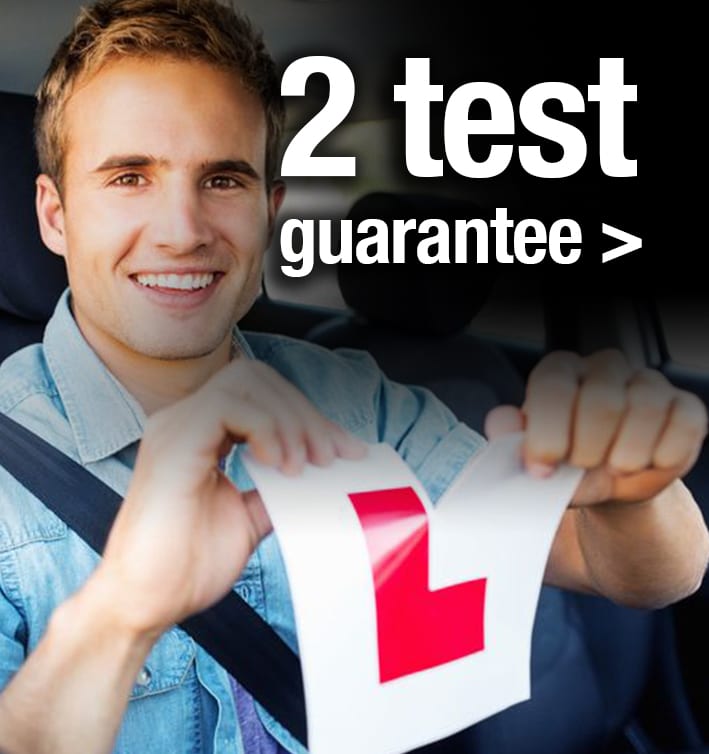
On the BIG TOM 5 Day Intensive Driving Course the subject of minimising risk when driving is introduced to you pre-course within the exclusive “Customer Update Videos” that are made available to you. One of the reasons why this is an important concept to become familiar with is because it is certainly not a given that this will come naturally to all, and the fact that a pupil can “drive” does not in itself mean that they are minimising risk. So it is one of these invisible skillsets that relates to a particular mind-set of how one drives. There are many characteristics involved and in this blog, Tom Ingram (Owner of BIG TOM Driving School) will expand on 2 of them: driving ‘defensively’ and the identification, assessment and managing of hazards.
Take 10 seconds to empty your mind of the second by second clutter, take a few slow, deep breaths and try hard to concentrate now and literally imagine in your mind the following scenario.
You are driving towards a large multi-laned roundabout, you have read the roundabout signs on the approach and identified which lane you need to be in for your exit. It is the middle lane of 3 in front of you. In front of you are a handful of cars across all lanes with 3 of them in your middle lane, about 100 yards ahead of you. Behind there are vehicles in all 3 lanes, but just one in the middle lane which is a long long way behind you.
You are approaching in 3rd gear at 30 mph. Can you picture this scene in your mind?
You notice that this roundabout is controlled by traffic lights, however, you cannot see any lights illuminated. There are in total 3 traffic lights in front of you on the entry to the roundabout but not one of them is lit with red, amber or green.
You see the 3 cars in front of you in your lane, one by one flowing on the roundabout and not stopping.
What do you do?
If you have really engaged in this blog, you will now have come to a decision. Because when you are driving, a decision you WILL need to make as you approach this hazard. I appreciate that you could have bypassed the decision making when you read this blog, you might now be reading just to ‘cut to the chase’ but in reality, when driving, you have a responsibility to identify this situation in front of you, assess the risk it poses, consider what options you have in dealing with it and make a decision.
So if you still haven’t made a decision, go back to where I start describing the situation, and really try to imagine being in this situation, driving alone, what would YOU do?
You see when you put yourself in the drivers seat of a vehicle, that action brings with it responsibility, you are responsible for the outcomes of your driving decisions. This is something that can easily be ignored. Driving a heavy 4 wheeled vehicle made of metal at speed, will in itself generate risk – risk for you personally in terms of your safety, as well as risk for everyone and everything around you. One of the key skills of “driving defensively” is your ability to acknowledge your own driving behaviours and appreciate any strengths or weaknesses. If you FAIL to do that, you are not accepting responsibility for the risk that you pose by sitting in the drivers seat. Thinking to yourself what aspects of driving do I find challenging and easy is important, because having an awareness of when you are feeling vulnerable, less confident and more wary is the first step towards managing risk. Paying no attention to how you feel when driving will affect the options that you consider to deal with hazards and even the decision making process.
One of the other concepts of defensive driving that is introduced to you early on the in course is the relationship between the speed you drive at and whether you would be able to stop within the distance that you can see you are able to. Think about that one for a few seconds while you consider your action at this roundabout.
But a core skill of safe driving is actually identifying a hazard in the first place. Your eyesight needs to be able to spot them in advance, your mind-set needs to be willing to accept that hazards arise at short notice, so you need to be alert and responsive. A hazard is anything that forces you to change speed and/or direction. So accepting that the roundabout ahead represents a hazard is a key skill in itself. However, you then need to assess it. Normally with traffic controlled roundabouts, the flows of traffic are being controlled but things are not ‘normal’ here. The traffic lights are not working. In terms of assessing a hazard that should now bump this particular hazard right up in priority in your mind – how can you assume for example that with traffic lights not working, that there will NOT be traffic coming from your right? Does the fact that 3 cars in front of you have all just entered the roundabout not 5 seconds before, mean that it is a given that you can also enter the roundabout?
In terms of risk assessment then, this situation is now ringing alarm bells in your mind; whilst the position of vehicles around your car cannot be ignored, in terms of risk they are incredibly lower risk compared to the roundabout ahead which has the traffic lights out. What options do you have? You could decide to do a complete stop at the roundabout and observe what is going on. You could reduce speed, lower the gears, not take it for granted that it is safe to go, and proceed with caution, now treating it like a normal roundabout without lights. You could blindly follow the cars in front and decide that for some reason which is not immediately entirely clear to you, copying the car drivers actions in front is the right option to take. It would be entirely understandable (albeit undesirable) if in my example above you decided to continue in the manner of the other 3 cars and entered the roundabout. It is often a hidden trap to pay too much attention to what others around you are doing, and allow them to influence your own driving behaviour.
Assessing risk is a skill. Not everyone automatically picks this up immediately. Being able to judge the significance to you personally of what you are seeing up ahead (in this case broken traffic lights on a roundabout) is a skill. Being able to think through your options and imagine the possible consequences for each so that you do a meaningful dynamic risk assessment takes time to develop. Some people are more able to consider possible consequences than others, this may be due to lack of previous experience, or an inability to appreciate how their presence on the road at a given time can affect other road users.
So my first piece of advice to my customers is make sure you watch the videos that we have prepared for you before you attend the course. In doing so, you are coming on to the course already with the awareness of the skills that are going to be developed – this is smart learning, it will make your in-car learning experience more efficient.
Secondly, as can be seen by the above description, there are many skills being developed when you are on your course and no-one is expecting you to instantly be good at these new skills, but I would encourage you to at least attempt to think of driving ability in terms of gaining skills rather than focussing on driving faults committed. With all new skills that we develop in life, you need to have your awareness raised initially, then have the opportunity to practise them in a methodical way so that safety is not compromised while you learn. New skills need regular, good quality practise in order to develop.
Lastly, if you have any questions at all, please feel free to drop them on the videos that you are watching – being able to learn outside of the in-car environment is a really smart action to take.
BIG TOM Driving School Enquiries: Admin@BIGTOM.org.uk Sales: 07756 071 464




